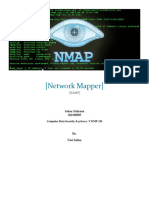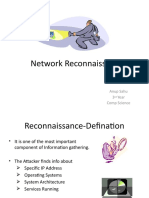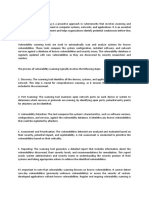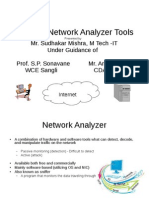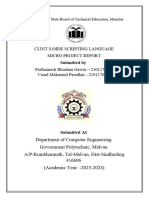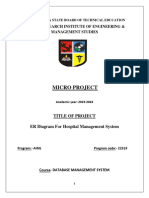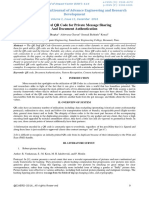0% found this document useful (0 votes)
75 views17 pagesAdvanced Task1 Network Vapt
The document provides a comprehensive overview of network scanning, script scanning, and network traffic analysis, detailing various tools and techniques for each area. It discusses types of network scanning, popular tools like Nmap and OpenVAS, and best practices for effective scanning. Additionally, it covers script scanning using Nmap's scripting engine and various tools for network traffic analysis, including Wireshark and SolarWinds NPM.
Uploaded by
prajaktashendeCopyright
© © All Rights Reserved
We take content rights seriously. If you suspect this is your content, claim it here.
Available Formats
Download as DOCX, PDF, TXT or read online on Scribd
0% found this document useful (0 votes)
75 views17 pagesAdvanced Task1 Network Vapt
The document provides a comprehensive overview of network scanning, script scanning, and network traffic analysis, detailing various tools and techniques for each area. It discusses types of network scanning, popular tools like Nmap and OpenVAS, and best practices for effective scanning. Additionally, it covers script scanning using Nmap's scripting engine and various tools for network traffic analysis, including Wireshark and SolarWinds NPM.
Uploaded by
prajaktashendeCopyright
© © All Rights Reserved
We take content rights seriously. If you suspect this is your content, claim it here.
Available Formats
Download as DOCX, PDF, TXT or read online on Scribd
/ 17








